 Blogs
Blogs
January 12, 2024 • 9 min read
As we enter 2024, over 300 million people across the globe are in need of humanitarian assistance. According to UN OCHA, 1 in every 73 people worldwide have been forcibly displaced, with conflict and climate change identified as the main drivers. More people are displaced today than at any other point since the beginning of the century.
As a deadly mix of crises, including natural disasters, conflict, economic shocks, hunger, and disease, continue to ravage the world’s most vulnerable communities, here are the humanitarian crises we cannot afford to ignore in 2024.
Syria
An estimated 16.7 million people in Syria, representing 75% of the country’s total population, are in need of humanitarian assistance.
2024 marks thirteen years of conflict in Syria, home to 7.2 million internally displaced people. Today, communities in Idleb and Aleppo are still rebuilding their lives following the catastrophic earthquake that struck southern Türkiye and Northwest Syria last February.
Last October, an escalation of violence in Northwest Syria displaced an additional 120,000 people in Idleb and Northern Aleppo. Endless airstrikes have made life unbearable for communities living under heavy shelling.
GOAL teams have been supporting communities in Northwest Syria since 2012 with emergency response, WASH (water, sanitation, & hygiene), and food security programmes. In 2023, GOALies also responded to the devastating earthquake, delivering lifesaving aid to thousands of families in need. Learn more about GOAL’s work in Syria.
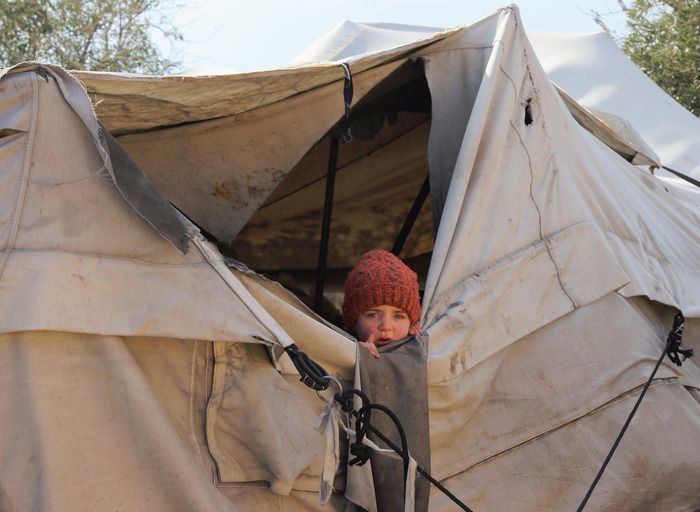
A child in Rabeeta Refugee camp in Idleb, Northwest Syria
Gaza
In just three months, more than 23,000 people have been killed in Gaza, including over 7,700 children. Nearly 300,000 homes have been destroyed, and more than 1.9 million people have been displaced (nearly 85% of Gaza’s total population).
The scale of the disaster is unfathomable. With each passing day, basic necessities like food, water, shelter, fuel, and medicine are becoming increasingly difficult to access.
Gaza is in desperate need of a ceasefire. Working with our local partner, GOAL is responding by delivering life-saving humanitarian aid to Palestinian families in need. Local teams are providing families and hospitals with food parcels, hot meals, bottled water, hygiene kits, fuel, medical equipment, and warm blankets. Learn more.
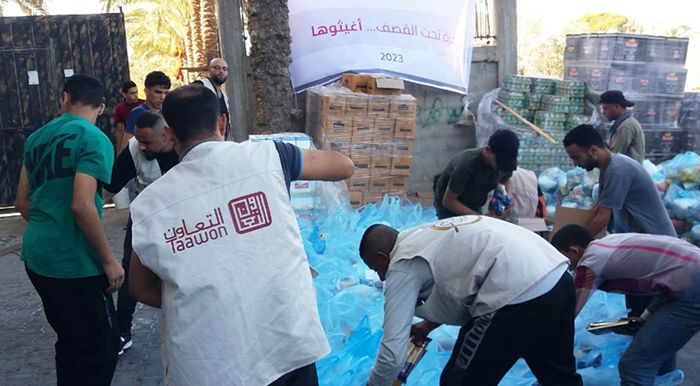
GOAL’s local partner, Taawon, distributing aid to Palestinian families in need.
Lebanon
The escalation of hostilities along Lebanon’s southern border has now displaced 76,000 people. As the conflict in Gaza worsens, tensions along the border are expected to rise and could result in an all-out war.
In response, GOAL is working with a local partner to provide healthcare services to vulnerable communities. Young children, pregnant women and the elderly are particularly at risk. Providing hygiene kits and gender-based violence prevention and protection will also be areas of priority. Learn more.
Sudan
In mid-April, intense conflict erupted in the Sudanese capital of Khartoum between the Sudanese Armed Forces and the Rapid Support Forces. 24.7 million people – more than half of Sudan’s total population – are now in dire need of humanitarian assistance.
Over 7 million people have been driven from their homes in what is now the world’s largest displacement crisis. 5.4 million people are internally displaced, and a further 1.35 million people have sought refuge in neighbouring countries.
Hunger and malnutrition were already at record levels in Sudan, but a staggering 20.3 million people – 42% of the population – are now facing acute food insecurity. 3.5 million children under five years are acutely malnourished, including 700,000 with severe acute malnutrition.
As Sudan enters its rainy season, flash flooding is resulting in additional displacement. The risk of disease is also heightened during this period, putting millions of already vulnerable children in critical danger. Sudan’s already weak healthcare system is now close to total collapse, with 80% of all hospitals in the country now out of service.
Despite significant challenges, GOAL teams are still operational in Darfur and South Kordofan, providing emergency nutrition, WASH (water, sanitation & hygiene), and health support to thousands of displaced families in need. Learn more.
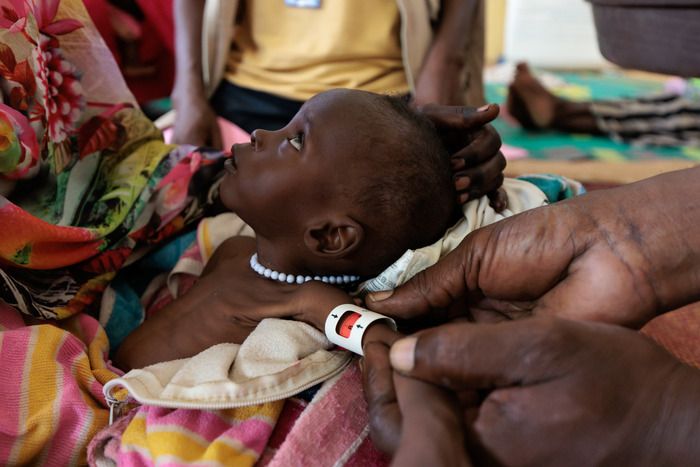
A GOAL nutrition centre in Kassab IDP Camp, North Darfur.
South Sudan
South Sudan, the world’s youngest country, has grappled with a deadly mix of crises in recent years, including climate change, disease, hunger, civil unrest, and economic shocks.
Since last April, 428,324 refugees from Sudan have crossed the border into South Sudan. Most are South Sudanese returnees who initially sought refuge in Sudan in 2013 when South Sudan was rocked by a bloody civil war.
Desperate Sudanese refugees are arriving at the border on foot, completely empty-handed, with nothing but the clothes on their backs. Hopeless, hungry, and exhausted, they are relieved to finally feel safe.
But their journey isn’t over yet. Local systems in South Sudan are struggling to cope with the increased humanitarian need. GOAL teams are on the border delivering nutrition, WASH (water, sanitation & hygiene), and medical support to refugees and returnees fleeing conflict in Sudan. Learn more.
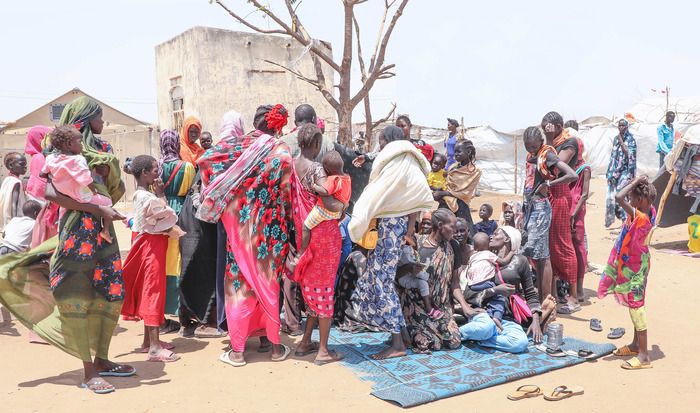
South Sudanese returnees in Paloich a transit site in South Sudan
Chad
Chad is extremely vulnerable to climate change. The country frequently suffers from erratic rainfall and natural disasters, which spur intercommunal conflict and displace thousands of people every year. Since mid-April, Chad has also accepted nearly 500,000 refugees from Sudan, placing significant pressure on Chad’s limited resources.
As of January, Chad is home to over one million refugees and 215,000 internally displaced people. 2.1 million people in Chad are also chronically food insecure. GOAL is working with local partners in Chad to support refugees and host communities by providing life-saving medical and nutritional care. Learn more.
Ethiopia
Ethiopia is facing a mix of deadly, overlapping crises. Armed Conflict, climate change, and economic shocks are forcing families in Ethiopia, especially in the northern Tigray region, from their homes.
20 million people in Ethiopia will need humanitarian assistance in 2024. As Ethiopia enters the rainy season, disease outbreaks and additional displacement due to flooding are expected. Meanwhile, in regions of Ethiopia affected by protracted drought, millions of people face chronic food insecurity.
Communities struggling with climate shocks are also grappling with the ongoing armed conflict, which has displaced over 4.5 million people. Ethiopia is also home to over 942,000 refugees from neighbouring countries, including Sudan.
The humanitarian need in Ethiopia is enormous. GOAL teams are there on the ground, providing food, clean water, hygiene supplies, and innovative solutions to help communities survive the impact of climate change. Learn more about GOAL’s work in Ethiopia.
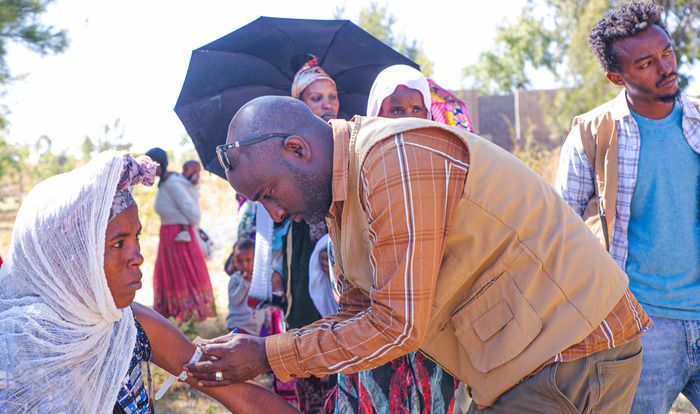
A GOALie screening a woman for malnutrition at a nutrition centre in Ethiopia.
Colombia
The plight faced by people in Latin America, particularly in Colombia, often goes unnoticed. Colombia has one of the largest populations of internally displaced people globally and the third largest population of refugees, mostly fleeing neighbouring Venezuela.
Over 2 million Venezuelan refugees now live in Colombia, and host communities have struggled to cope with the influx of migrants. The pandemic, unstable political conditions, and escalating violence are contributing to an escalating humanitarian crisis. Venezuelans in Colombia often live in poor conditions, isolated from the rest of society.
GOAL teams in Colombia are supporting Venezuelan migrants with social cohesion programmes and skills training to help them find sustainable and dignified employment. GOAL also provides emergency preparedness training to migrants living in precarious and informal urban settlements. Learn more about GOAL’s work in Colombia.
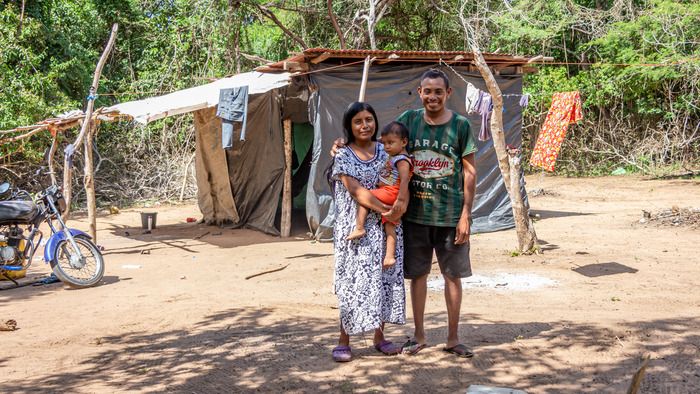
A Venezuelan migrant family standing in front of their home in Colombia.
Venezuela & Ecuador
In Venezuela, an economic collapse has left 19 million people unable to afford basic necessities like food or healthcare. More than 7.7 Venezuelans have fled the country in what is now the largest refugee crisis in Latin America. Meanwhile, a surge in cartel violence and civil unrest in Ecuador is putting innocent families in danger.
Unprecedented numbers of migrants from the two countries are attempting to escape poverty and crime through the Darién Gap, a 100 km stretch of jungle and extremely hazardous terrain between Colombia and Panama.
From January to June of 2023, more than 250,000 migrants traversed the gap – a three-fold increase from that same period the previous year. By the end of 2023, an unprecedented half a million migrants had crossed the Darién Gap.
The trek through the Darién jungle is extremely treacherous. Desperate migrants are vulnerable to physical injury, theft, human trafficking, kidnapping, GBV (gender-based violence), and death. Migrants are often exhausted, hungry, injured, sick, and traumatised upon arrival in Panama.
To support local and national governments cope with the humanitarian need, GOAL is working with local partners organisations to offer support to migrants preparing to embark on their trek through the Darién Gap in Colombia, and to migrants passing through Honduras on their onward journey north. Learn more.
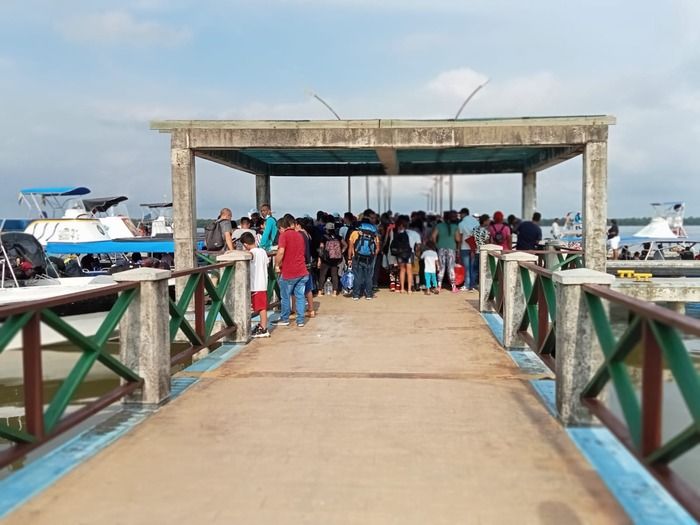
Migrants embarking to Acandi & Capurgana (Darién Gap doors)
Haiti
The humanitarian crisis in Haiti is complex. Millions of people were still trying to rebuild their lives following a devastating 2020 earthquake when Haitian president Jovenel Moise was assassinated in July of 2021.
A power vacuum emerged, and Haiti’s capital, Port-au-Prince, is now primarily controlled by violent, heavily armed gangs. Hundreds of innocent civilians have been killed in indiscriminate fighting, and over 147,000 people in Port-au-Prince have been displaced.
Armed groups are blocking the distribution of food, drinking water, fuel, medical supplies, and humanitarian aid from Haiti’s main port. This lack of food and clean water is leading to a severe hunger crisis on the streets of Port-au-Prince, in addition to a resurgence in cholera.
Over 1,000 people have died from cholera since the fighting began, and there are more than 4,000 confirmed cholera cases in Port-au-Prince — but the number of actual cases is believed to be much higher.
GOAL is one of two international aid agencies operating in Port-au-Prince and the surrounding communities, delivering life-saving aid. Learn more about GOAL’s work in Haiti.
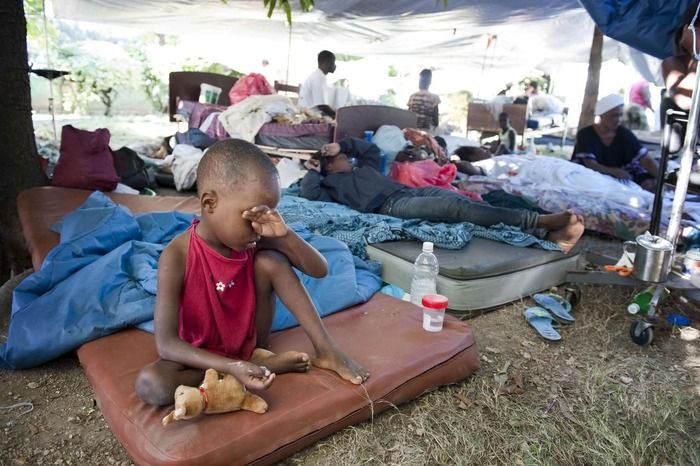
A child in a displacement camp in Port-au-Prince.
Ukraine
Almost two years since Russian forces invaded, recent escalations have dampened any optimism for an end to hostilities. Since late December, 125 civilian deaths have been reported, including at least five children.
Over 14.6 million people urgently require humanitarian assistance, with many living through a harsh winter without electricity or water. Millions are without heating as temperatures drop to as low as to -15 degrees Celsius. This crisis also places millions of people, including 1.5 million children, at risk of trauma-related mental health challenges.
GOAL teams are providing information sessions on legal and protection issues to internally displaced people. In partnership with local NGO, Right to Protection, GOAL also offers counselling sessions and psychosocial support services to those in need. Learn more about GOAL’s work in Ukraine.
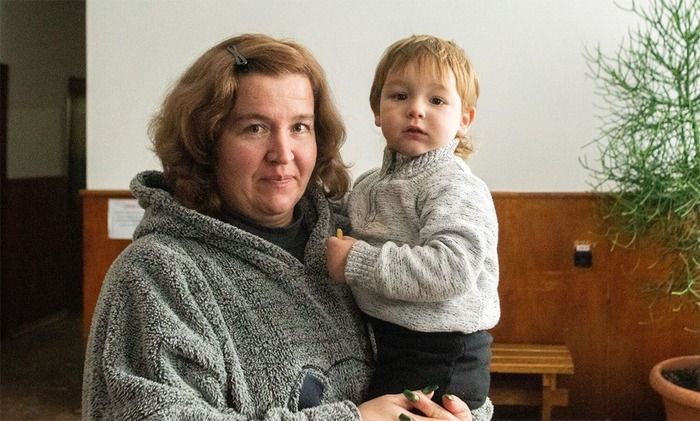
Katya, a displaced Ukrainian mother who was supported by GOAL.
